When teams work together, they can accomplish more than they could alone. As projects grow in size and complexity, collaborating can get messy fast. Communication breaks down, tasks fall through the cracks, and team members can start to feel like strangers. Team productivity apps can help get your group back on track by optimizing your productivity workflow. This blog will begin by introducing some of the best team productivity apps on the market.
Antispace’s AI-based productivity operating system can help you achieve your goals by streamlining your productivity workflow and making it easier to get organized before you explore specific team productivity apps.
What is Team Productivity?

Team productivity is the combined output and quality of work from a team of employees. It can be measured on different levels, such as tracking the entire department's team productivity or a pair of employees working together towards a common goal. For example, a B2B sales manager might track the team productivity of the company’s sales agents to see how many deals close together within a period.
Alternatively, the manager could track team productivity for smaller groups, such as agents who focus on selling to clients within specific industries or agents who focus on clients of a certain size. Knowing team productivity helps managers understand how employees work together and whether employees are meeting or exceeding expectations.
Understanding the Importance of Team Productivity
Team productivity is essential for your organization’s success, no matter how big you are or what industry you’re in. If your employees cannot work efficiently, hit clear goals, or measure their accomplishments, your organization will struggle. This means one of your key goals must be to ensure your teams can work as efficiently as possible.
Several aspects go into productivity, including accurate goal-setting based on how people work, good communication, ample resources, and precise measurements of successes and failures. Beyond that, you must ensure your teams are motivated to be productive, including preventing burnout and rewarding good work. While much to consider, there are tried and tested ways to improve team productivity.
Related Reading
- What Is Productivity Software?
- Pyramid of Productivity
- Small Business Intelligence
- Using AI to Enhance Business Operations
- Methods to Improve Productivity in Operations Management
- AI Workflows
21 Best Team Productivity Apps To Check Out
1. Antispace: The AI-Based Productivity Operating System
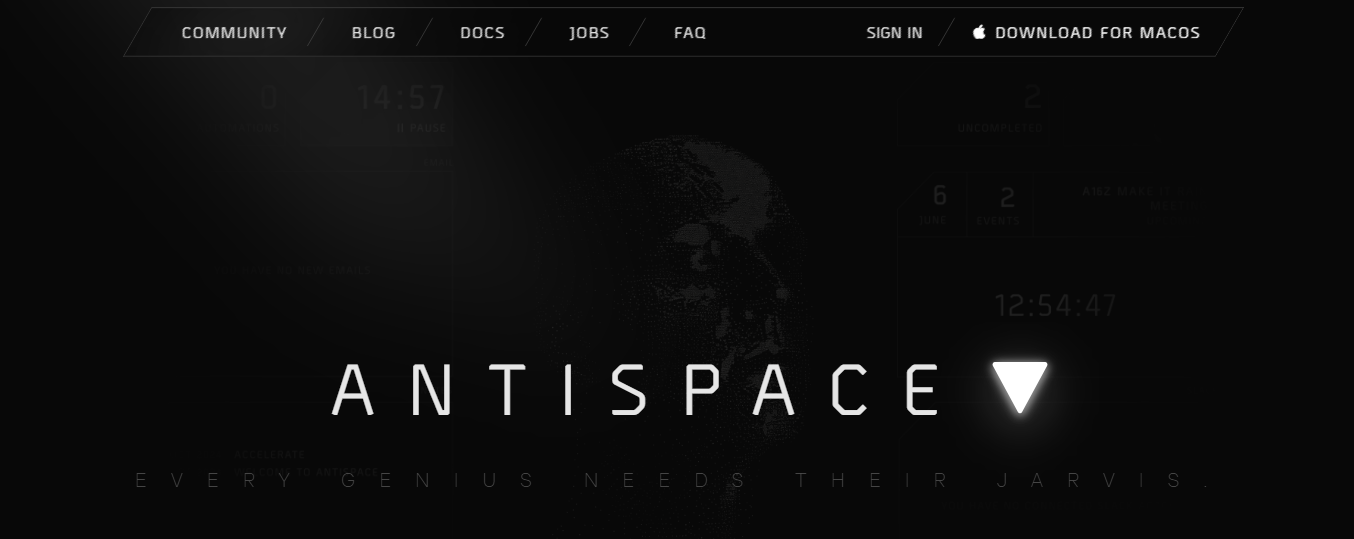
Antispace transforms your daily workflow with an AI-based productivity operating system. Our platform seamlessly integrates with your essential tools:
- Calendar
- Notes
Our AI assistant handles everything from email management to task organization. We've built intelligence into every aspect of your workflow:
- Smart email responses
- Automated calendar management
- Enhanced note-taking
- Streamlined task coordination
Your AI Executive Assistant for Effortless Productivity
Antispace is your virtual executive assistant. It reduces context switching and automates routine tasks, letting you focus on what matters while our AI handles the rest.
Whether you're brainstorming ideas, managing communications, or coordinating projects, Antispace turns productivity from a chore into an engaging experience. Get started for free with one click today.
2. Slack: The Real-Time Communication Hub

Slack is a communication platform built for teams that need to stay connected and collaborate in real time. It helps organize conversations through channels, so each team, project, or topic has a dedicated space. This makes finding the correct information easier and keeps everyone on the same page.
With just a few clicks, you can send instant messages, share files and documents, record and send voice messages, or start a video call. Everything happens in real time, which helps your team move faster and stay aligned.
Slack Features for Teams
Slack also offers advanced features like message search, strong security settings, and powerful integrations with other tools, so your team can automate simple tasks, get notifications, or trigger workflows directly from the app.
3. Google Workspace: The Ultimate Document Collaboration Tool
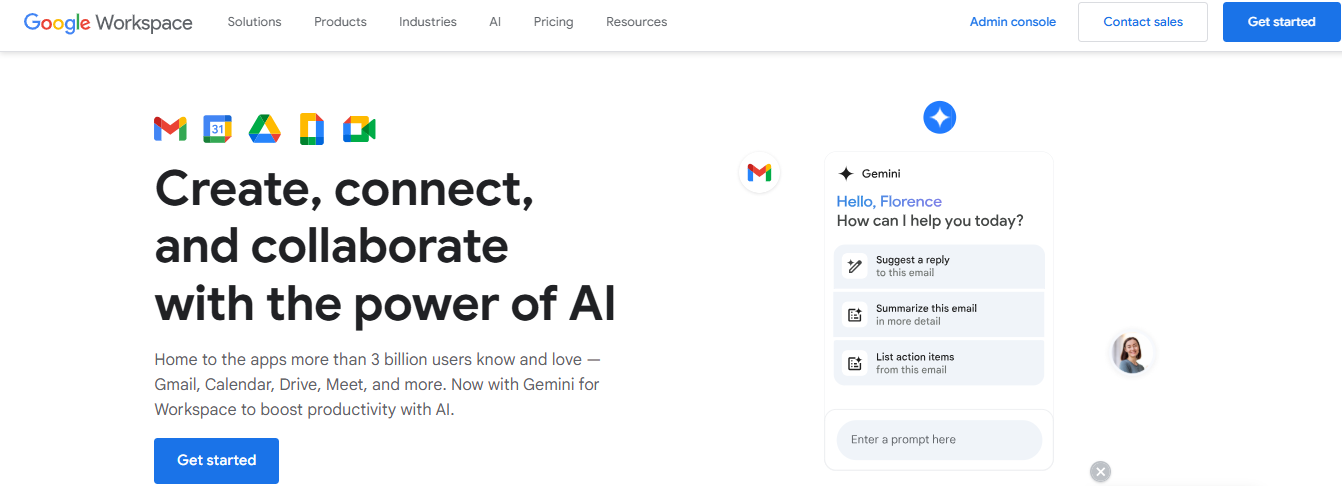
Google Workspace makes it easy for teams to collaborate on documents, spreadsheets, and presentations in real time.
Collaborate with Google Tools
With tools like Google Docs, Sheets, and Slides, multiple people can edit the same file at once, leave comments, suggest changes, and track updates as they happen. Everything is stored in the cloud, so your team always has access to the latest version, no more sending files back and forth.
Plus, Google Drive makes organizing and sharing documents with teammates, clients, or external partners simple. You can also connect Google Calendar, Gmail, and Meet to schedule meetings, manage tasks, and communicate, all within the same ecosystem.
4. Canva: A Design Collaboration Tool Anyone Can Use

Canva makes creating visual content easy for anyone on your team, and no design skills are required. Everything can be built using customizable templates and drag-and-drop tools, from social media posts to presentations, infographics, and banners.
One of Canva’s best features is real-time collaboration. Multiple people can work on the same design, leave comments, and make edits simultaneously, which is perfect for teams that need quick feedback and smooth creative workflows. You can also set up brand kits to keep colors, logos, and fonts consistent across all your designs, and organize your projects in folders to keep everything in one place.
5. Asana: An Easy Project Management Tool

Asana helps teams stay organized and on track by turning big projects into clear, manageable tasks. You can create to-do lists, assign tasks, set deadlines, and choose how to view everything, on a list, board, calendar, or timeline. It’s packed with helpful features like task dependencies, custom tags, and priority levels so that you can tailor each project to your team’s needs.
You can also automate repetitive steps, like assigning tasks or sending reminders, to save time. Asana works well with tools like Slack, Google Drive, and Zoom, so your team stays connected without jumping between platforms. Plus, real-time updates and progress tracking help everyone stay aligned.
6. ClickUp: The Best Tool for Project Tracking
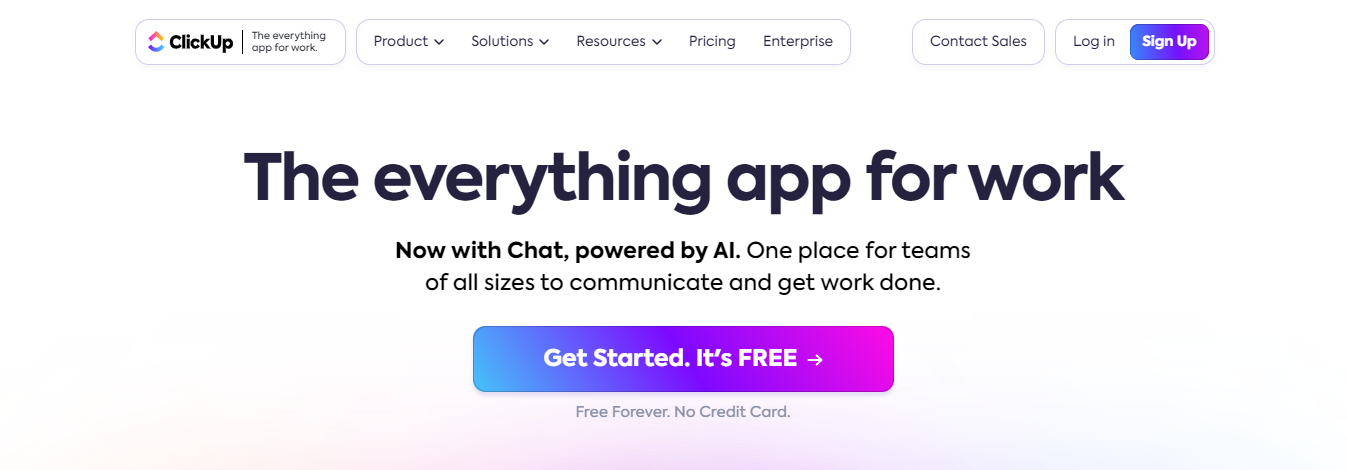
ClickUp stands out as one of the best tools for project tracking because it gives you a full picture of what’s happening at every stage and in real time. You can break down big goals into tasks and subtasks, assign them, set deadlines, and track progress with custom statuses that fit your workflow.
ClickUp for Project Visibility
Its flexible views, like lists, boards, timelines, and Gantt charts, let you see exactly where things stand and spot any delays before they become problems. You can also add priorities, time estimates, and dependencies to stay on top of every detail.
ClickUp makes it easy to filter and sort tasks, track workloads, and generate progress reports, so nothing falls through the cracks. And if your team juggles multiple projects at once, you can manage them all from one place without feeling overwhelmed.
7. Teamwork: The Time Tracking Project Management Tool

Teamwork is a project management tool that focuses on time tracking and task management. It’s ideal for teams that need to monitor their time spending closely, whether it’s for billing clients, managing workloads, or improving efficiency.
Teamwork for Time Tracking
You can track time manually or with built-in timers, log billable hours, and generate time reports for each task, project, or team member. It helps you understand how your team works and where things can be optimized.
Alongside time tracking, Teamwork lets you assign tasks, set deadlines, add comments, and collaborate, all in one place. It also integrates with tools like Slack, Google Drive, and HubSpot to keep your workflow connected. If time tracking is a priority for your team, Teamwork offers one of the most complete and easy-to-use solutions.
8. Calendly: The Scheduling Tool for Teams
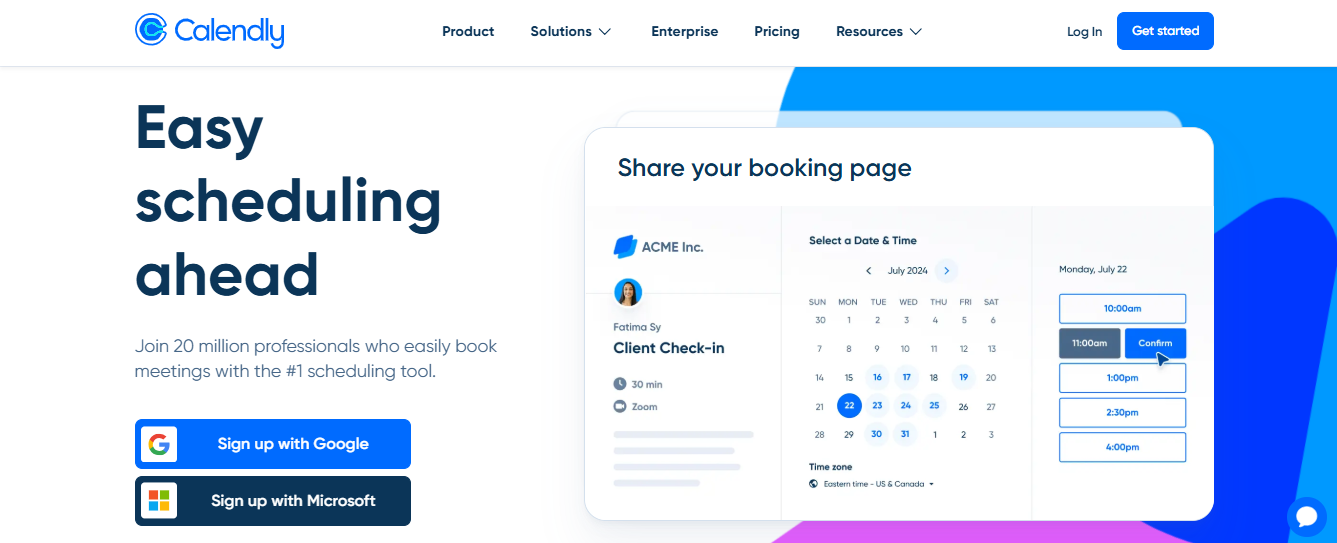
Calendly takes the hassle out of scheduling meetings. Instead of endless back-and-forth emails, you share your availability and let others book a time that works for everyone. It syncs with your calendar to avoid double bookings, and you can set rules for your availability, meeting length, buffer times, and more. It's perfect for internal catch-ups, client calls, or team check-ins.
Calendly makes coordination easy for teams. You can set up group availability, round-robin meetings, or even create booking pages for different departments. If your team spends too much time scheduling meetings, Calendly is a simple tool that makes a big difference.
9. Zendesk: Customer Service Productivity Software
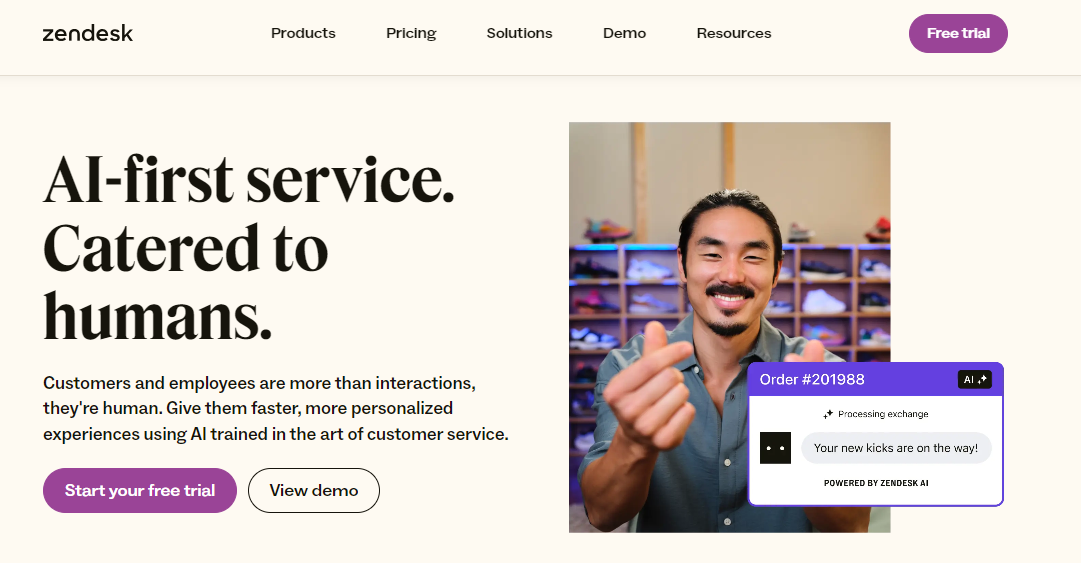
Zendesk is built to simplify customer support teams' lives. AI-powered features help agents work faster, stay organized, and provide better service right from the start. Tickets are routed to the right person automatically, and AI can summarize conversations and suggest replies to save time.
Everything your agents need, customer details, chat history, and tools, is in one place, so jumping between apps is unnecessary. Smart chatbots can handle common questions, giving customers quick answers and letting your team focus on more complex issues. You also get tools to manage your team’s schedule, track performance, and plan ahead during busy times.
10. Todoist: The Elegant Task Management Tool
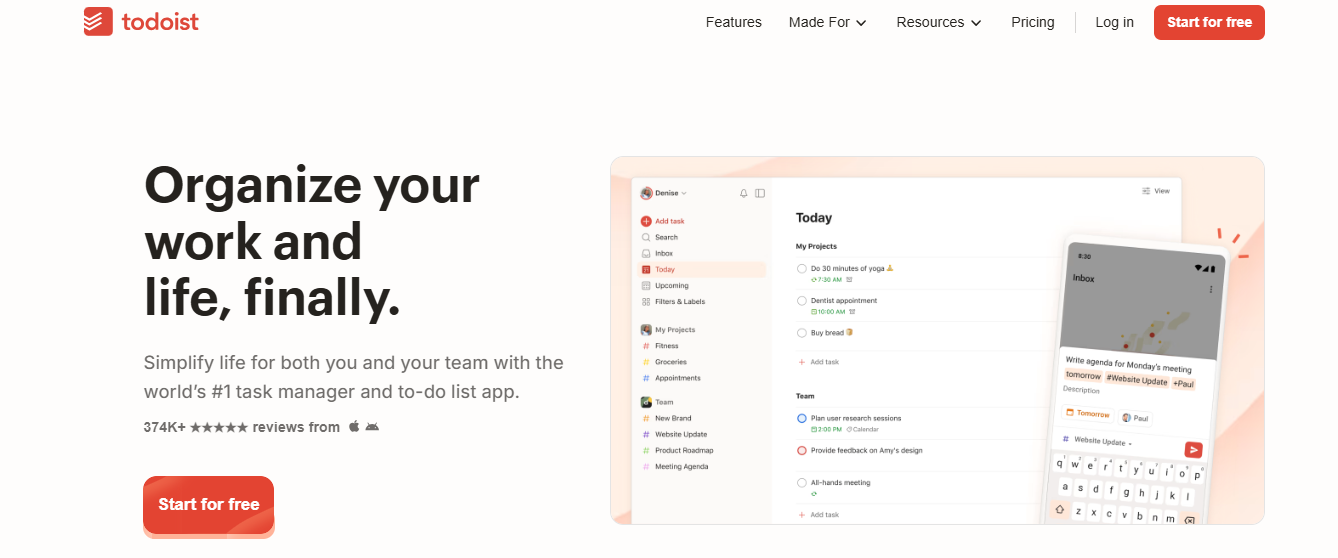
Todoist is a simple but powerful app that helps you stay on top of daily tasks. You can create to-do lists, set deadlines, add priorities, and group tasks into projects, all in a clean, easy-to-use interface. It’s great for personal productivity, but it also works well for teams.
You can assign tasks, leave comments, and get notifications when something’s updated, so everyone stays in the loop. Todoist also works across devices and integrates with tools like Google Calendar, Slack, and Dropbox to keep everything connected.
11. Airtable: A Collaborative Productivity Tool
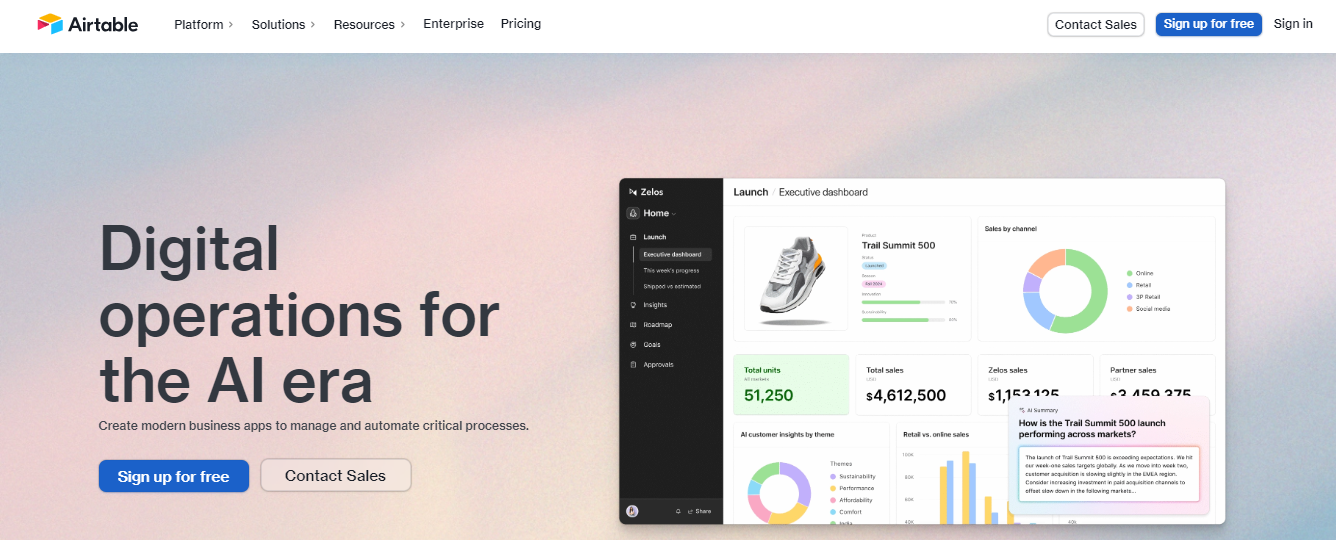
Airtable is one of the best collaborative productivity software for productive teams that helps its users to communicate and be productive in the workplace. It provides a platform for team members to share ideas, discuss tasks, and track progress.
Airtable for Team Efficiency
Airtable also offers features such as:
- Real-time collaboration
- Task management
- File sharing
This makes it an essential tool for teams who want to be productive and efficient in their work. Airtable also integrates with other productivity tools such as:
- Slack
- Google Drive
- Dropbox
This allows teams to use Airtable as a central hub for all their communication and collaboration needs.
12. Quip: A Team Collaboration Tool for Document Projects
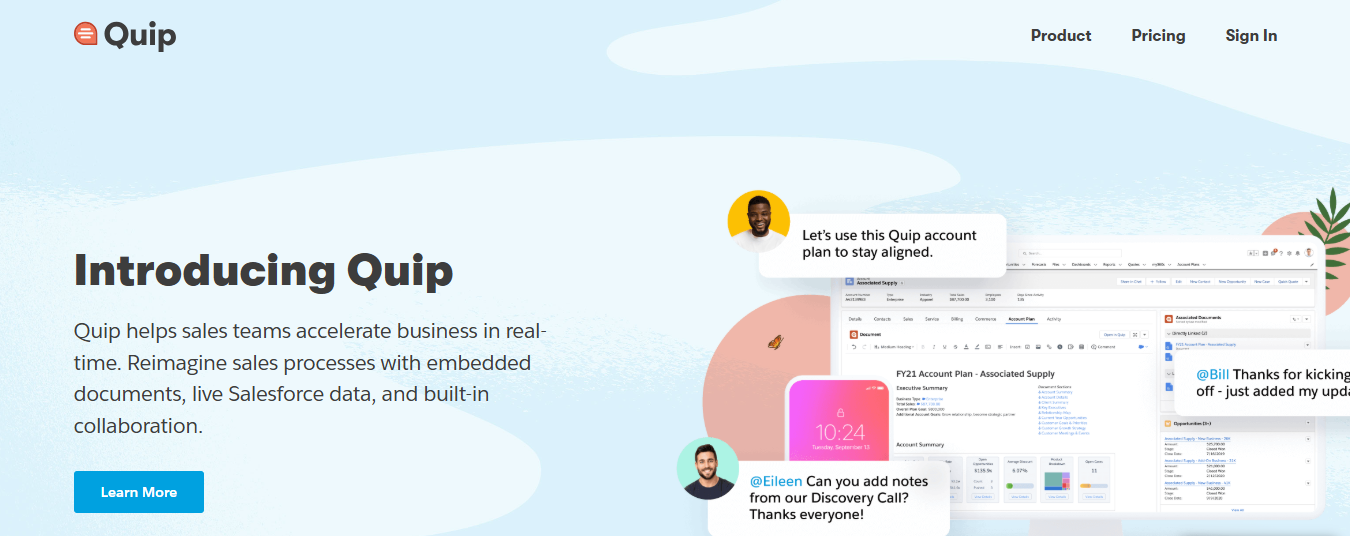
Quip is a collaborative productivity software for productive teams that helps its users to communicate with each other in real time, whether they’re in the same office or across the globe. With Quip, teams can collaborate on documents and projects, sharing ideas and feedback instantaneously.
Quip also provides users with tools to stay organized and productive, such as task lists and calendar integration. As a result, Quip helps teams to be more efficient and effective in their work. And that means better results for businesses of all sizes.
13. Chanty: A Team Collaboration Tool to Boost Productivity

Chanty is among the top cloud-based team collaboration and productivity software. Its simple interface makes it easy to use, and it has a variety of features that help teams work together more effectively. For example, Chanty allows users to create task lists and assign tasks to specific team members.
It also includes a chat function, which makes it easy for team members to communicate with each other. In addition, Chanty integrates with various other applications, making it even easier for teams to work together. Chanty is an effective collaboration tool that can help teams be more productive.
14. Clockify: Track Your Time
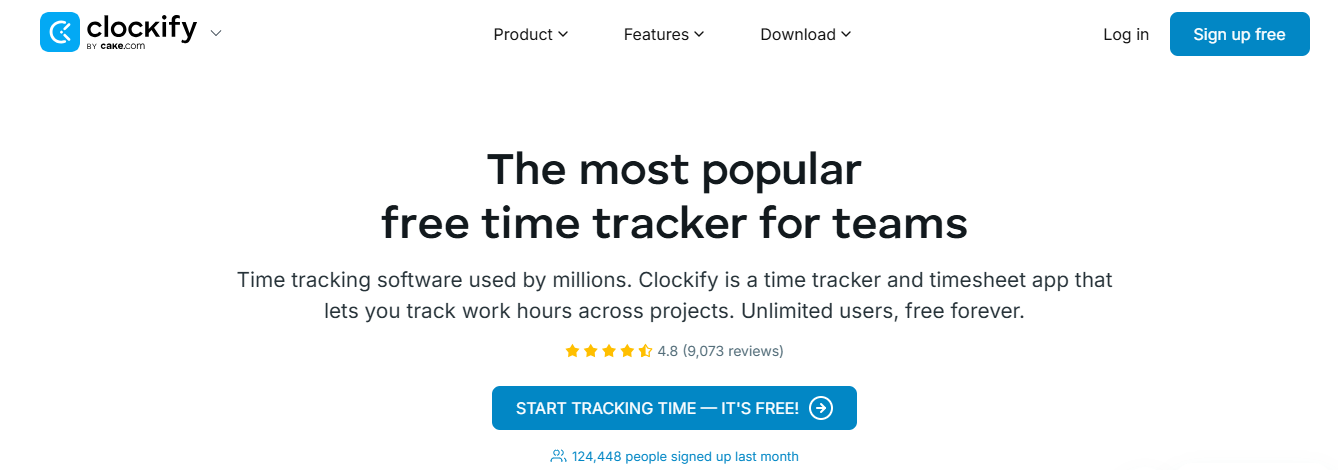
Clockify is a time tracking tool that helps teams and individuals track how much time they spend on tasks. It’s a great tool for managing time and improving productivity. Clockify offers a simple way to track time across projects.
You can see detailed reports of how time is spent, which helps identify areas to improve. Clockify also integrates with tools like Trello, Asana, and Baserow, making it easier to manage time alongside your projects.
15. Notion: All-in-One Workspace
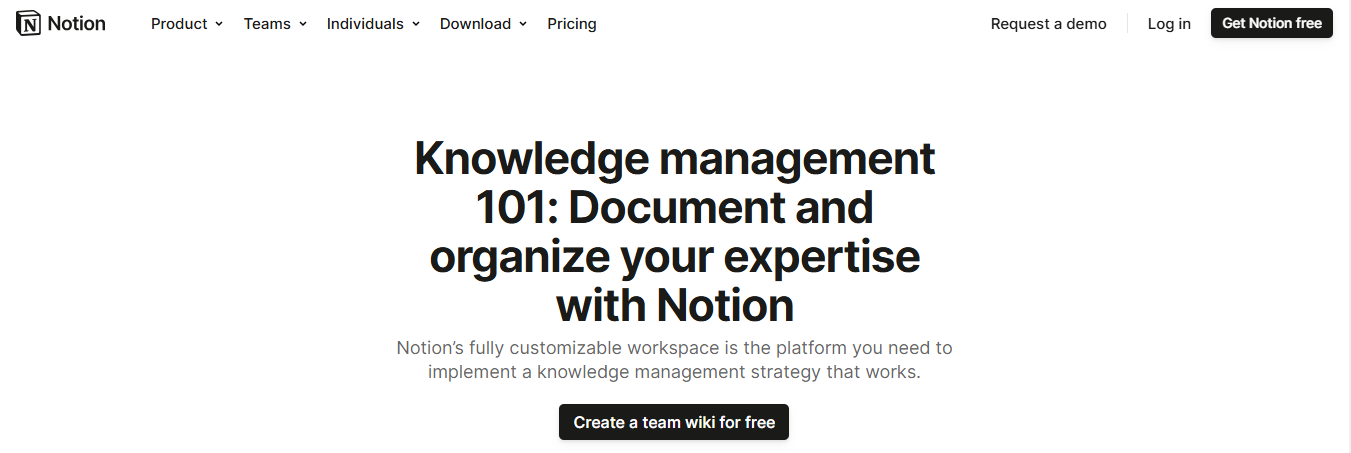
Notion is a versatile tool that combines notes, documents, and project management into one platform. It’s perfect for teams that need to keep everything in one place. Notion’s flexibility lets you create custom workflows, track progress, and collaborate on documents in real time.
It’s great for teams that need a simple, all-in-one workspace for both projects and information. For teams in different time zones, Notion makes it easy to work together without delay.
16. Grammarly: Improve Your Writing
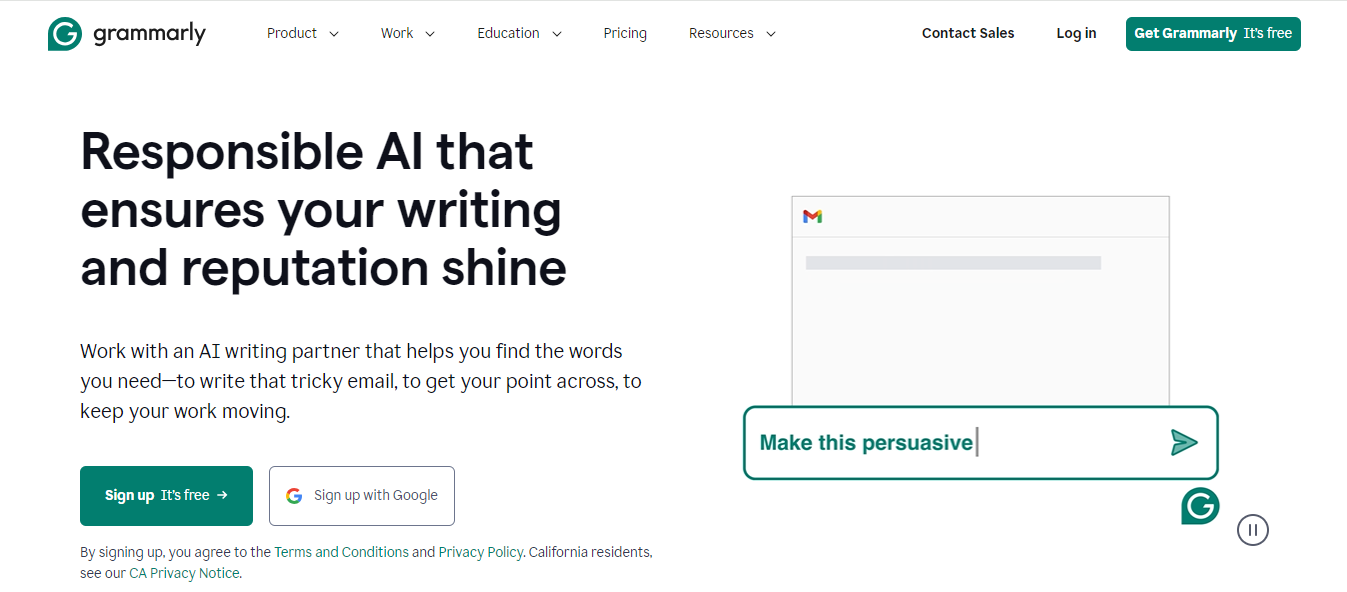
Clear communication is essential for team collaboration. Grammarly is a writing tool that helps teams improve their written communication by checking grammar, spelling, and style. Grammarly can be used directly in email platforms, word processors, and project management tools, providing great writing assistance.
It helps team members write clearly and professionally, saving time on revisions. Whether you’re writing reports or emails, Grammarly ensures your team’s communication is error-free.
17. Zapier: Automate Repetitive Tasks
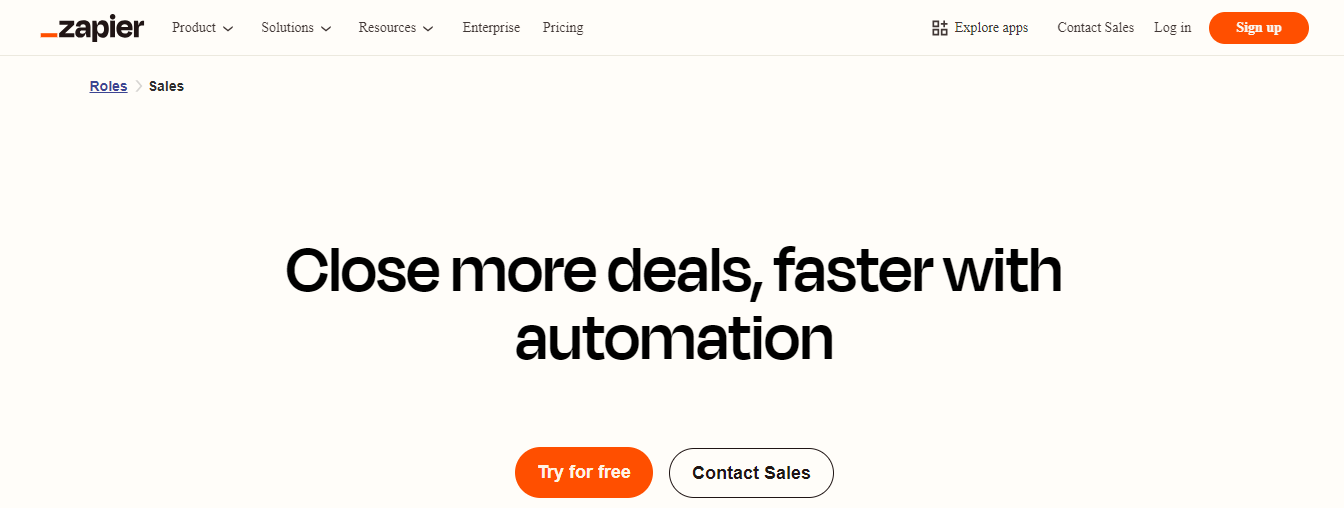
Zapier is a tool that helps teams automate repetitive tasks. It connects different apps and sets up workflows to perform tasks automatically, eliminating the need for manual input. This saves time and reduces human error, ensuring that processes run smoothly without constant supervision.
By automating everyday tasks, businesses can enhance productivity, improve efficiency, and allow employees to focus on higher-value work rather than routine administrative duties. For example, Zapier can automatically send emails, create tasks, update documents, or sync data across multiple platforms.
Workflow Automation
Whether it’s notifying a Slack channel when a new lead is captured in a CRM, adding new form submissions to a spreadsheet, or generating invoices in an accounting app, Zapier handles these workflows seamlessly. With Zapier, you can free your team from repetitive tasks and focus on more important work.
It integrates with a wide range of apps, including Baserow, Slack, Trello, Google Sheets, Asana, HubSpot, and thousands more, making it a highly flexible automation tool for businesses of all sizes. Additionally, Zapier offers customization options that allow users to create complex, multi-step workflows tailored to their unique operational needs.
18. Zoom: Easy Video Calling

Zoom is the go-to tool for video calls and virtual meetings. It allows you to connect with team members, no matter where they are. With high-quality video and audio, Zoom makes it easy to have face-to-face meetings, even if your team is spread out across the globe.
Zoom also offers screen sharing, breakout rooms, and meeting recording features. These features make it an excellent tool for collaboration. Zoom integrates with other productivity tools like Slack and Microsoft Teams, helping teams stay organized while connecting in real time.
19. Microsoft Teams

Microsoft Teams is a central hub for collaboration, enhancing how teams work together. It offers essential features like quick access to forms and centralized document sharing, which strengthen the collaborative efforts of team members. More than 1,900 Microsoft Teams apps further enhance the platform, allowing custom integrations tailored to specific teamwork needs.
The extensive range of functionalities in Microsoft Teams includes text chat and video calling, both of which are vital for ensuring clear communication among team members. This powerful suite of tools makes it an essential resource for any group looking to improve their efficiency and interaction.
20. Gitlab

Gitlab is one of the leading team collaboration and productivity software for productive teams that helps its users communicate. This can be extremely helpful when trying to coordinate work on a project or simply staying up to date on what others are doing.
Team Collaboration
Gitlab makes it easy to share files and track changes. This is especially important when multiple people are working on the same file; it allows everyone to see what changes have been made and prevents accidental overwrites.
Finally, Gitlab’s features help to promote a collaborative environment by making it easy for team members to give and receive feedback. All of these factors contribute to making Gitlab an essential tool for collaboration.
21. Invision
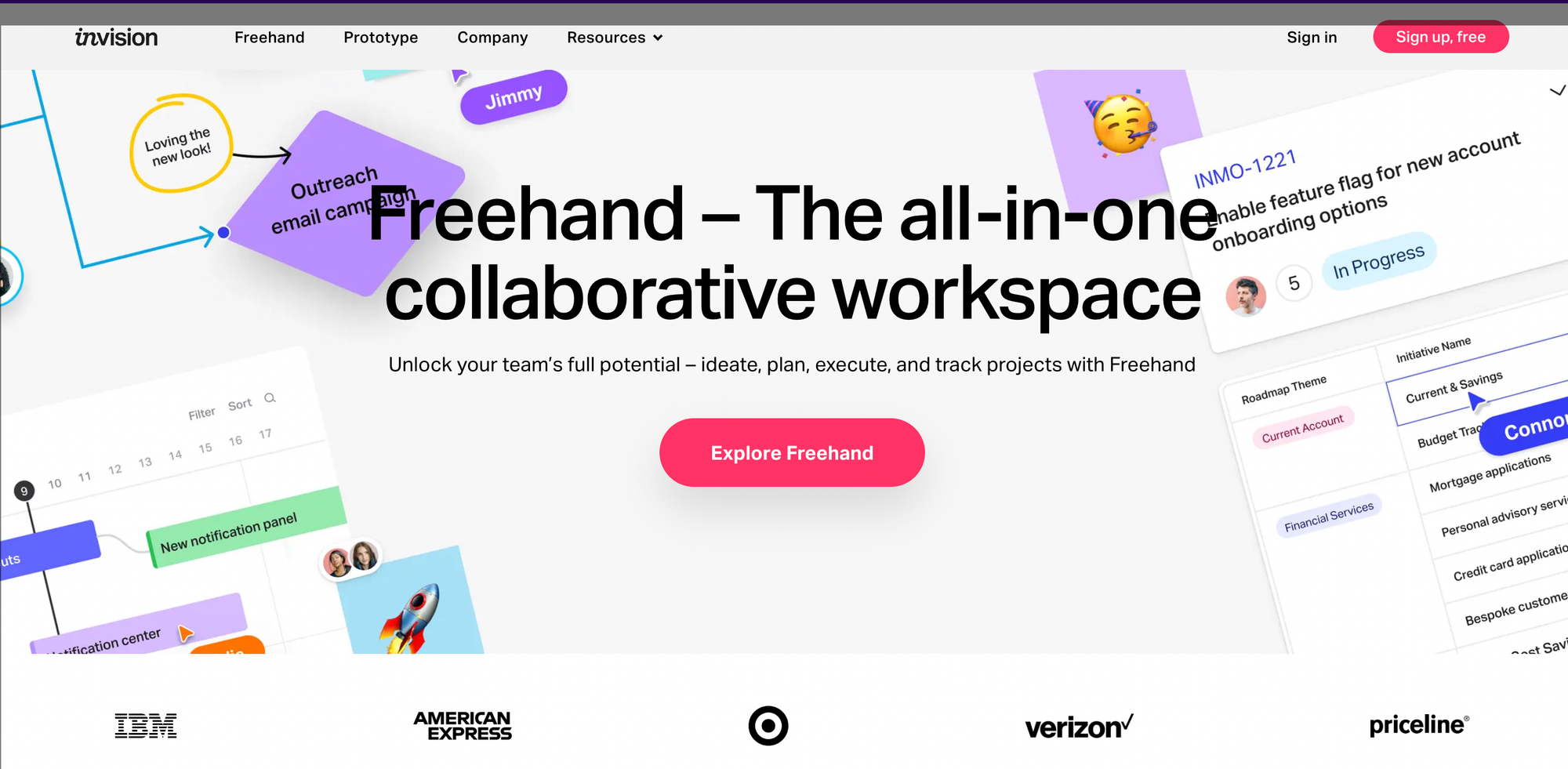
Invision is among the top collaborative productivity applications that help teams to stay productive by streamlining the design process. The platform allows team members to share ideas, provide feedback, and track project progress in real-time. This online collaboration tool is essential for businesses as it helps to reduce miscommunication and speeds up the design process.
In addition, Invision provides a central location for all project files, making it easy for team members to access the latest versions of designs. With Invision, teams can work together more efficiently to create high-quality products.
Related Reading
- Factors of Productivity
- Productivity Software Examples
- Microsoft Productivity Tools
- Improve Focus and Productivity
- Productivity Tools for VAs
- Best Free AI Tools
- Best AI Tools for Math Teachers
Choosing The Best Team Productivity Apps

Choosing the best productivity tool starts with identifying your team's unique challenges.
- What problems are you trying to solve?
- Are you trying to manage projects, keep communication in sync, or centralize knowledge?
- Maybe all three?
Define your team’s daily challenges and goals before you start browsing productivity apps. This focus will help you skip the shiny features you’ll never use and zero in on platforms that meet your real needs.
Look for Ease of Use—and Quick Wins
If a tool is clunky or hard to figure out, your team won’t use it. Simple as that. The ideal app should feel intuitive, even for new users. But beyond user-friendliness, ask how fast we can start seeing value from it? A tool that delivers quick wins, like smoother task tracking or faster feedback loops, will build team confidence and drive adoption. No one wants to wait months to see a return.
Keep an Eye on the Total Cost
It’s tempting to focus on monthly subscription prices, but the true cost includes much more:
- Training time
- Onboarding support
- Customization
- Integrations
- Ongoing maintenance
Hidden fees can creep in quickly. A seemingly affordable tool might cost more in lost time and IT headaches if it doesn’t scale well.
Look for Smarts: AI Features
Modern productivity tools are getting smarter. AI isn’t just a buzzword; when done well, it adds value. From innovative task suggestions and automated scheduling to highlighting potential project delays, AI can help your team work faster and more strategically. AI can be a serious time-saver if your workflows involve lots of data or repeated tasks.
Antispace: AI Productivity OS for Smarter Workflows
Antispace transforms your daily workflow with an AI-based productivity operating system. Our platform seamlessly integrates with your essential tools:
- Calendar
- Notes
Our AI assistant handles everything from email management to task organization. We've built intelligence into every aspect of your workflow:
- Smart email responses
- Automated calendar management
- Enhanced note-taking
- Streamlined task coordination
Your AI Executive Assistant for Effortless Productivity
Antispace is your virtual executive assistant. It reduces context switching and automates routine tasks, letting you focus on what matters while our AI handles the rest.
Whether you're brainstorming ideas, managing communications, or coordinating projects, Antispace turns productivity from a chore into an engaging experience. Get started for free with one click today.
7 Best Tips For Boosting Team Productivity

1. Encourage Open Communication and Collaboration
Clear communication is non-negotiable; 56% of project delays stem from poor communication. A team that communicates effectively can share ideas, feedback, and information, leading to better decision-making and improved productivity. Collaboration promotes a sense of teamwork and encourages each member to contribute effectively.
Some ways to do this are through regular team meetings, brainstorming sessions, or workshops where everyone can contribute ideas and identify the ways forward. Encouraging team members to be honest, respectful, and open with each other can help improve trust, camaraderie, and team performance. Using the right tools and technology to measure their impact is also a core part of good communication.
2. Provide Adequate Resources and Tools
The right resources and tools, including technology, are important to increase team productivity. Employees must have the best equipment, software, hardware, and any other tools to perform their job effectively. For example, a graphic design team needs the latest version of design software to complete their design projects successfully.
Resources That Boost Productivity
Adequate resources also mean providing the team with a conducive work environment, comfortable furniture, and office supplies, everything they need to be comfortable and attentive during the workday, even if they work from home or remotely.
This way, the team can focus on their tasks and deliver quality work on time. Investing in good tools and resources requires time and money, but these are foundational to improving productivity and making your team more effective.
3. Prioritize Time Management and Task Allocation
Time management is a critical aspect of productivity. Poor time management can lead to missed deadlines or incomplete projects, which could affect team productivity. Team leaders have to prioritize proper task allocation and time management, which means using intentional planning and resources.
One way to do this is to break down larger projects into smaller, more manageable tasks with specific deadlines. With this approach, each team member has a clear understanding of their responsibilities, and there is less likelihood of confusion or redundancy. Additionally, each member can work towards achieving their specific goals and enjoy a sense of progress.
Project Tools for Smarter Management
Another way to effectively prioritize time management and task allocation is by using project management tools. These can help team leaders assign tasks, set deadlines, and track progress. They can also help to identify any potential roadblocks or bottlenecks in the project, allowing team leaders to take corrective action before it’s too late.
Managers aren’t the only ones who have visibility; tools can be configured so team members can track progress, which increases collaboration and reduces frustration. Some tools also automate reporting and follow-up activities, allowing employees to do more critical tasks.
4. Offer Training and Development Opportunities
Giving your team members ways to grow empowers them to be more productive. It’s also essential to provide the team with training and development opportunities to enhance their skills and knowledge. You can offer workshops, seminars, and online courses, or pay for employees to participate in continuing their education outside of the workplace, including paying for classes and licenses.
Training for Team Growth
When you invest in the team’s professional growth, they become more efficient and effective in their work, leading to increased productivity and better results. Training opportunities provide team members with new knowledge and techniques that they can apply to their work, while also stoking their passion for their role in the organization.
At the same time, development opportunities provide a concrete way for team members to progress in their careers and take on new responsibilities that can improve morale and productivity.
Retention Through Team Development
Offering training and development opportunities can also help retain top talent within the organization. When team members feel invested in and given opportunities to grow, they’re more likely to stay with the company long term. This can save the organization time and money that would otherwise be spent on recruiting and training new employees.
Another advantage of providing training and development opportunities is that it can help to create a culture of continuous learning within the organization. When you encourage team members to learn and grow, they’re more likely to seek out new information and ideas that benefit the organization. This can lead to innovation and improved performance across the board.
5. Appreciation and Recognition
A recent survey discovered that 37% of employees value employee recognition the most. Fair employee appreciation and recognition are proven ways to improve team productivity and nurture healthy workplace relationships. As a team leader, you should create custom reports for everyone to analyze their performance levels and recognize your best performers regularly.
You should note that frequent rewards and recognition are more important to employees than a significant, infrequent event. When you value your employees’ hard work and efforts, they will likely be happier and more engaged, motivating them to work even harder.
6. Track Progress and Analyze Performance Metrics
In order to keep employee productivity moving and ensure continuous improvement, you need to track progress and analyze performance metrics regularly. By monitoring individual and team progress, team leaders can identify areas in which team members are performing well and those in which they require extra support or training.
Performance metrics such as productivity, efficiency, quality, and revenue can help identify any trends on which to follow up. Regular performance evaluations, feedback sessions, and open communication lines are some ways to track progress, gain insight, and identify ongoing improvements. These metrics are also a foundation for rewarding employees who go above and beyond, or who’ve completed difficult tasks on time and up to quality standards.
7. Address Common Obstacles to Team Productivity
Finally, it’s important to nip obstacles to team productivity in the bud before they become major problems. Be honest about your organization’s strengths and weaknesses, and make a game plan to play to the strengths and minimize the weaknesses.
Knowing the problem is half of the solution, but you still have to do something about it. Once you know where the hang-ups are, you can create solutions and strategies to overcome them.
Related Reading
- AI Tools for Finance
- AI Tools for Small Business
- AI Tools for Business Analyst
- Small Business Productivity Tools
- Enterprise Productivity Solutions
- Personal Productivity Tool
Let Our AI-based Productivity Operating System Handle Your Boring Work
Antispace is an innovative productivity app that seamlessly integrates with your email, calendar, and notes to transform your daily workflow. It acts like a virtual assistant, automating and organizing your tasks so you can focus on the work that matters. The platform helps reduce context switching and boosts productivity by streamlining communication, project coordination, and idea generation.
Get started for free with one click today.